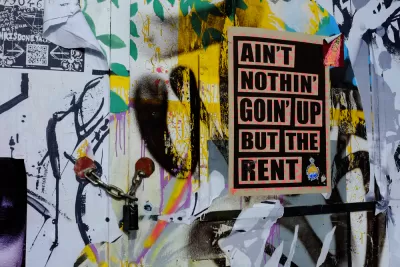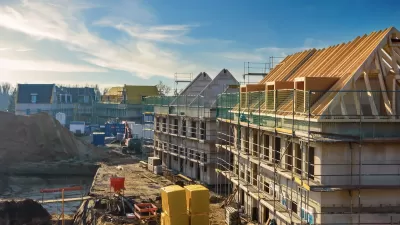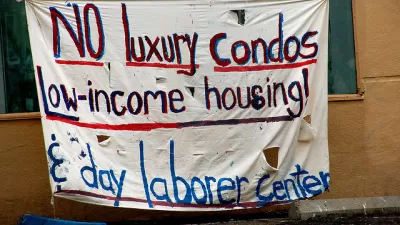Some urbanism commentators suggest that gentrification is the result of a "rent gap" between actual and potential rent. How should this theory affect zoning policy?

The "rent gap" theory offers on the common explanations for gentrification. According to this theory, investors will be most tempted to purchase land when there is a disparity between the current rental income of the land and the potentially achievable rental income. The theory makes sense at first glance—why invest money in land if you cannot make a profit on it?
What is more controversial is the use of rent gap theory to justify opposition to new market-rate housing. One argument is that if new market-rate housing is built, landlords will discover that they can afford to charge more rent for existing housing, and thus start raising rents and evicting tenants. Thus, it is argued, market-rate housing in lower-income areas leads to gentrification and the displacement of poorer tenants. It seems to me, however, that the logic of this argument supports no new market-rate housing anywhere: if new housing raises rents, obviously any new housing (other than government-subsidized low-income housing) is bad.
It seems to me, however, that this version of rent gap theory is based on a couple of questionable assumptions. First, it overlooks the effect of zoning on "potentially achievable rental income." It seems to me that anti-housing zoning actually increases potential rent: a city that severely limits the supply of housing will normally increase the price of such housing, which in turn means that the rental income potentially available to a new building's landlord will be much, much higher than the rental income that a landlord might get in a more permissive city. It follows that restrictive zoning may increase the rent gap, rather than erasing the rent gap.
Second, the use of rent gap theory to oppose new housing makes sense only if new housing increases the value of existing housing nearby, thus creating a rent gap where none existed. In theory, this might be true if new housing leads to amenities that make the existing housing more attractive. On the other hand, some studies suggest that new housing not only holds citywide rents down by increasing housing supply, but might even have the same effect on nearby housing. For example, a new study by Evan Mast and two other economists finds that new market-rate units lower rents in nearby buildings by 5 to 7 percent. Thus, new housing might not be the cause of a rent gap. More broadly, new housing might be the result of gentrification rather than the cause—otherwise, neighborhoods like New York’s West Village (which have experienced less new construction than other city neighborhoods) would never gentrify.
So even if the rent gap theory is to some extent valid, it does not follow that it justifies opposition to new housing.

Study: Maui’s Plan to Convert Vacation Rentals to Long-Term Housing Could Cause Nearly $1 Billion Economic Loss
The plan would reduce visitor accommodation by 25,% resulting in 1,900 jobs lost.

Alabama: Trump Terminates Settlements for Black Communities Harmed By Raw Sewage
Trump deemed the landmark civil rights agreement “illegal DEI and environmental justice policy.”

Why Should We Subsidize Public Transportation?
Many public transit agencies face financial stress due to rising costs, declining fare revenue, and declining subsidies. Transit advocates must provide a strong business case for increasing public transit funding.

Paris Bike Boom Leads to Steep Drop in Air Pollution
The French city’s air quality has improved dramatically in the past 20 years, coinciding with a growth in cycling.

Why Housing Costs More to Build in California Than in Texas
Hard costs like labor and materials combined with ‘soft’ costs such as permitting make building in the San Francisco Bay Area almost three times as costly as in Texas cities.

San Diego County Sees a Rise in Urban Coyotes
San Diego County experiences a rise in urban coyotes, as sightings become prevalent throughout its urban neighbourhoods and surrounding areas.
Urban Design for Planners 1: Software Tools
This six-course series explores essential urban design concepts using open source software and equips planners with the tools they need to participate fully in the urban design process.
Planning for Universal Design
Learn the tools for implementing Universal Design in planning regulations.
Smith Gee Studio
Alamo Area Metropolitan Planning Organization
City of Santa Clarita
Institute for Housing and Urban Development Studies (IHS)
City of Grandview
Harvard GSD Executive Education
Toledo-Lucas County Plan Commissions
Salt Lake City
NYU Wagner Graduate School of Public Service






























